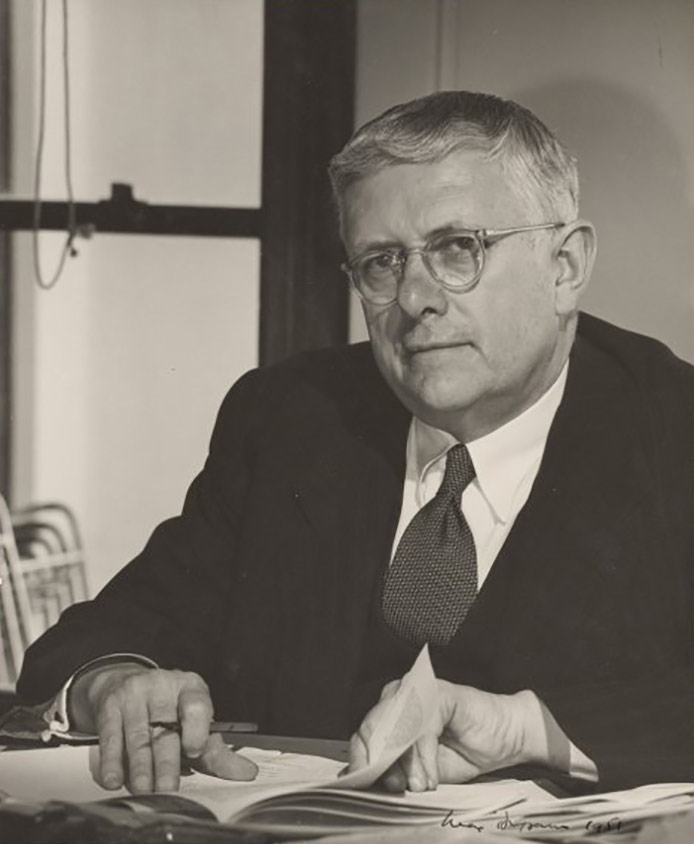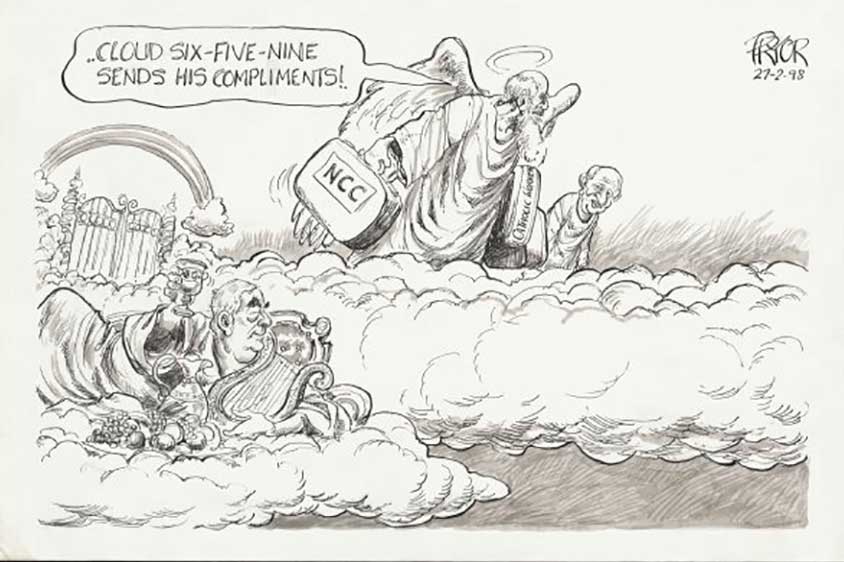In 1955 the Australian Labor Party (ALP) split for the third time in its history, this time over anti-communist sentiment.
The split helped keep Prime Minister Menzies' government in power for another 17 years.
JW Neill, State Secretary of the Australian Railways Union, reported in the Argus, 7 February 1955:
There is no such word as ‘surrender’ in the vocabulary of A.L.P. groupers in Victoria or other States.

A new world order
In the wake of the Second World War, the alliance established between the Soviet Union, Great Britain, the United States and France to defeat Germany broke down.
In Europe, the Soviets took control of much of Eastern Europe whose citizens soon found themselves cut off from contact with the West as if an ‘Iron Curtain’ had fallen.
The United States’ development and use of atomic weapons had sparked a new arms race and, in an atmosphere of suspicion and distrust, all major powers invested substantially in intelligence and espionage organisations.
The collapse of the alliance into open hostility had substantial implications for Australia’s domestic political landscape. The post-war end of colonial rule in much of Africa, the Middle East and Asia, and the spread of communism in China and South-East Asia, gave rise to fears about national security and stability.
Shown evidence of a spy ring operating out of the Soviet embassy in Canberra, Prime Minister Ben Chifley issued a directive in March 1949 to create a security service. In August that year, the Australian Security intelligence Organisation (ASIO) was established.
The division of much of the world between US-led capitalist democracy and Soviet-led single-party communism was echoed within the Labor Party itself. Defined as a democratic socialist party, there was increasing antagonism between the supporters of communism and those who were more right wing.
Outside the party, Labor’s opponents began to develop a strong anti-communist rhetoric and public support for communism fell. This was in stark contrast during the war when membership of the Communist Party reached a peak of 23,000 in 1944.

Fall of the Chifley government
Ben Chifley had become Prime Minister on the death of John Curtin in 1945. His government undertook a variety of projects that were designed to boost national pride and to provide work for returning servicemen. Two of these, the Snowy Mountains Hydro-Electric Scheme, and the launch of the first Holden, are featured in the Defining Moments project.
However, the ALP was defeated in the 1949 election. There were two major issues which contributed to the loss. The first was a deeply unpopular attempt to nationalise the banking system in 1947. The second was a protracted miners’ strike in the winter of 1949, which the government was forced to condemn because the miners had refused to wait for the arbitration court to hear their case.
The Liberal and Country Party coalition was able to portray Labor as being pro-communist with regard to the bank issue and anti-labour with regard to the strike. Neither claim was true.
Meanwhile in Victoria, a small group of Catholic laymen led by Bob Santamaria – the Catholic Social Studies Movement (known simply as ‘The Movement’) – was growing in influence. They had their first meeting on 4 January 1942, just when Communist Party membership in Australia was peaking.
Firmly anti-communist, the Movement grew increasingly adept at infiltrating ALP branches in its attempt to control the party. It was behind the NSW Labor Party conference resolution of 1945 to form ‘Industrial groups’ that would attempt to win control of communist-dominated unions. These ‘groupers’ were relatively successful in their aims, but split the Labor Party in the process.
Communism and the Petrov Affair
When the Chifley government lost power to Menzies in 1949, the threat of communism was made to seem even more serious by Menzies’ attempt to ban the Communist Party in June 1950.
The legislation would give the government the power to ‘declare’ a person a communist, thus preventing them from holding certain positions of authority, such as an official in a union. In essence, the government would have the power to control the appointments to a wide variety of important public positions through the legislation’s declaratory power. Those named as communists would have to seek court action to overturn the declaration. The onus of proof was on them; the presumption of innocence would no longer apply. In a victory for civil liberties, the Australian population narrowly voted against the proposal.
For Labor, the situation went from bad to worse in April 1954 when the Petrov Affair broke. Vladimir Petrov, a KGB officer based in the Soviet embassy, defected on 3 April 1954, and his wife Evdokia followed two weeks later. One of the documents handed over by Petrov implicated staff members of the Leader of the Opposition, ‘Doc’ Evatt.
Evatt was convinced, wrongly, that the defection of the Petrovs was timed to affect the outcome of the upcoming election. During the Royal Commission into the defection of the Petrovs, Evatt claimed that the documents had been forged. The Commission banned him, further inflaming his suspicions. The Royal Commission found that there was no evidence of tampering with evidence, and no charges were laid against the six men investigated.
Evatt was not satisfied. He responded with an attack on the anti-communist element of his party, specifically in the Victorian branch. The Victorian executive of the party was replaced. When the old executive showed up at the March 1955 party conference in Hobart, they were locked out.
Those loyal to Evatt remained in the ALP. The breakaway group was called the Australian Labor Party (Anti Communist), which later became the Democratic Labor Party.
Despite the widespread but erroneous belief that the Petrov Affair had been fabricated to damage the Labor Party, its effect just before an election was a boon for the Menzies government. The Democratic Labor Party gave its preferences to the Liberal/Country Coalition.
Menzies announced an early election for 10 December 1955, which the Coalition won. It would become the longest-running government in the history of the nation, remaining in power until 1972.
Explore Defining Moments
You may also like
References
The Museum of Australian Democracy’s online exhibition about the Petrov affair
Brian Costar, Peter Love and Paul Strangio (eds), The Great Labor Schism: A Retrospective, Scribe Publications, Carlton, Victoria, 2005.
Nick Dyrenfurth and Frank Bongiorno, A Little History of the Labor Party, UNSW Press, Sydney, 2011.
Brian McKinlay, A Century of Struggle: The ALP Centenary History, Collins Dove, Melbourne, 1981.